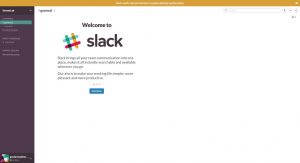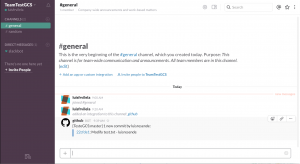Slack is a collaborative working tool designed to facilitate communication between members of the same professional team. It is so popular that the company behind it is now valued at over $20 billion. If you’re looking for ways to ensure smooth communication within your company, consider Slack. Here’s everything you need to know about it.
What is it used for?
Slack is a workplace communication tool. It is unique in that it was designed to allow:
- easy communication between employees;
- the use of work tools;
- files to be easily shared.
In other words, Slack is an instant messaging system featuring many add-ons with other work tools. These add-ons are not necessary to use Slack, as the main functionality is talking to other people. There are two methods of chatting in Slack: channels (group chat) and direct messaging or DM (person-to-person chat). The latter is for switching from one person to another. The channel function, on the other hand, is much more interesting.
In Slack, a channel is like a chat room. When used within companies, it is usually organized around a topic of discussion, such as a project and is very straightforward. To send a notification to everyone in the channel, simply type @channelname then your message. This is only necessary if addressing the whole team to make an important announcement, for example. However, to notify a single person, you need to type @person’sname in the search bar at the top. @ here means you are online or active and /me means you can tell others what you are doing. For example, you can write “/me is out to lunch” so that others can see that you are on your lunch break.
It is also possible to create a private group on Slack. This works exactly like a simple channel, but you only join by invitation.
For the record, Slack was created in 2013. It started as an internal tool used by Stewart Butterfield’s team within his company Tiny Speck. Its developers used it to streamline communication when they were designing the game “Glitch”. At the beginning of 2020, Slack has more than 1800 applications in its collection. It offers more than 500,000 add-ons to choose from. And it has over 12 million daily active users on its platform. That’s 37% more than it announced this time last year.
It is coded in Electron, an open source framework developed by GitHub and is compatible with most of today’s most popular operating systems including Windows, Linux, iOS, Windows Phone, Android and macOS.

What functionalities are useful for a company?
Slack offers many interesting features for its users. However, not all of them are useful in a company setting. If you are looking for a way to get the most out of Slack for your company, here are the main features that might interest you:
- Workspace: With Slack, each team in the company can have its own workspace. Groups of people make up each one and it has its own files and useful information. It also includes the applications needed to complete its specific project. In short, you are free to define and set up each workspace as you see fit.
- Search: Slack gives you the opportunity to search for everything, from people’s names to specific task information to channels and more.
- Task: Far more important than channels, tasks allow companies to increase the productivity of their teams. With task hashtags (#task name), you have the opportunity to pool your to-do list in one place. You check them off one by one as they are completed.

How to create a technical channel with monitoring data for dev-ops?
Slack has nearly 600,000 active developers on its platform and there is a reason for this. In addition to the advantages and functionalities mentioned above, Slack allows for better coordination of actions taken by dev-ops teams. This is essential to ensure the smooth running of your website, among other things.
To do this, it is probably a good time to point out that it is entirely possible to monitor your website, software or application directly in Slack. All you have to do is create a technical channel to gather the monitoring data collected. Then, it is all available in one place, which means you can easily share them with your colleagues when needed.
First of all, you will need an efficient monitoring tool such as that offered by internetVista. Then, follow these few steps:
- Add a new media on internetVista: Login > Media > New Media
- Choose Slack
- In the form displayed, enter your alias and click on the “Add to Slack” button
- Once on Slack, choose the channel in which you want to receive notifications
- Allow the internetVista application to send these notifications to your account
- Save your new media
- Pair your new media with your application(s) as needed.
Otherwise, you still have the alternative of using the internetVista webhook support
In Slack:
- Go to Login, then Home before clicking on Integration
- Create your own integration: Incoming webhooks
- Define the channel that will receive the internetVista messages
- Copy the URL that Slack will provide to you (for example: https: //hooks.slack.com/services/XYZ45…)
In internetVista:
- Add the URL as media by going to Login > Media > New Media
- Use the URL that Slack has generated for you
- Add the parameter: payload=@SLACK_PAYLOAD@ and make sure the submission method is indeed “Post”.
- Associate your new media with your application as appropriate.
Conclusion
Slack is an excellent communication tool for your teams, which can moreover optimize your organization. You can even interconnect it with your internetVista (your web service monitoring tool). In this way, all notifications will arrive directly in the channel dedicated to your responsible teams, the dev-ops or the system team or the web team.
